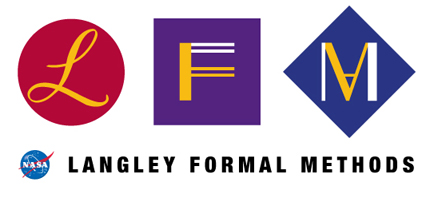|
|
|
home >
research >
causal analysis
 We are investigating
the use of formal languages
to represent causal reasoning,
especially as used in accident and incident
reporting.
This work will evaluate the suitability of using one or more existing
mathematical representations of causality as the basis for developing
tools for (1) explaining causes and contributing factors to mishaps, (2)
analyzing causal explanations for consistency, completeness, and other
desired characteristics, (3) storing causal explanations for retrieval,
and (4) using previously stored causal explanations in the design of new
systems. The anticipation is that an adequate representation will
require integration of logical, linguistic, and graphical notations. If
a suitable representation can be developed, then appropriate prototype
tools based on that representation will be developed. The purpose of
the work is to improve understanding of why particular mishaps occur,
and to improve the probability that the lessons taught by mishaps will
be lessons learned.
The approach is to build on the pioneering work of people such as
Chris Johnson
We are investigating
the use of formal languages
to represent causal reasoning,
especially as used in accident and incident
reporting.
This work will evaluate the suitability of using one or more existing
mathematical representations of causality as the basis for developing
tools for (1) explaining causes and contributing factors to mishaps, (2)
analyzing causal explanations for consistency, completeness, and other
desired characteristics, (3) storing causal explanations for retrieval,
and (4) using previously stored causal explanations in the design of new
systems. The anticipation is that an adequate representation will
require integration of logical, linguistic, and graphical notations. If
a suitable representation can be developed, then appropriate prototype
tools based on that representation will be developed. The purpose of
the work is to improve understanding of why particular mishaps occur,
and to improve the probability that the lessons taught by mishaps will
be lessons learned.
The approach is to build on the pioneering work of people such as
Chris Johnson
 and
Peter Ladkin
and
Peter Ladkin
 . .
Papers produced as part of the CAUSE project include the following:
The leader of this project,
C. Michael Holloway
began a research sabbatical on October 1, 2003, as a NASA Langley
Floyd Thompson Fellowship recipient.
Mr. Holloway was the general chair
of the 2003
Workshop
on the Investigation and Reporting of Incidents and Accidents (IRIA 2003)
and a member
of the program committee for
IRIA 2002
This research was part of a larger effort within the Engineering for Complex Systems Program to improve mishap investigations and reporting. This news release from Ames Research Center describes some of the other ECS-sponsored work.
Note: The
|
||
|
home | welcome | quick page | philosophy | team | research | quote | links | new? Curator and Responsible NASA Official: Ricky W. Butler larc privacy statement last modified: 20 October 2004 (15:33:03) |
